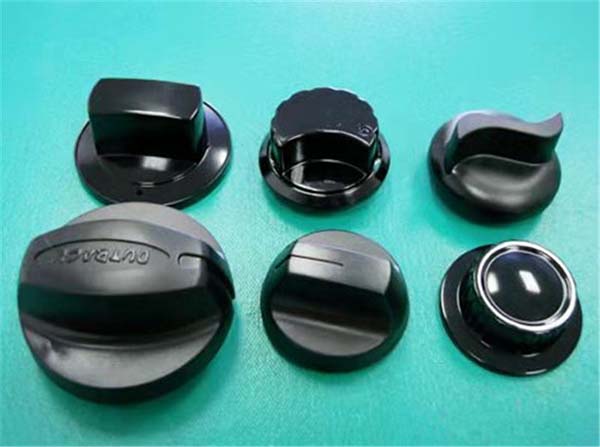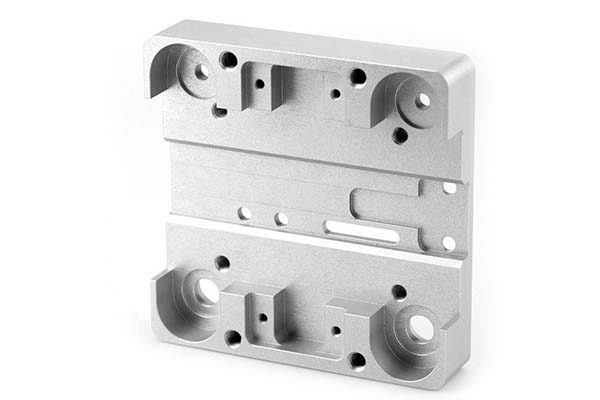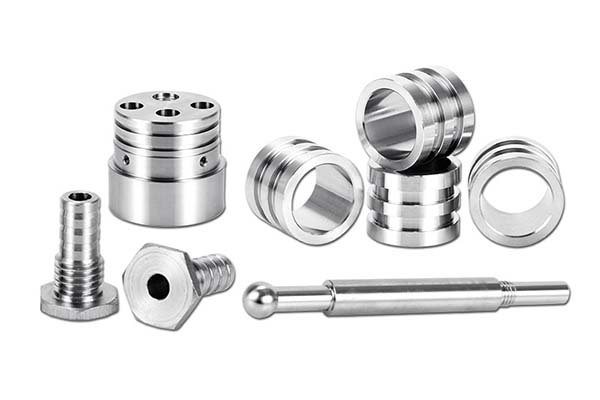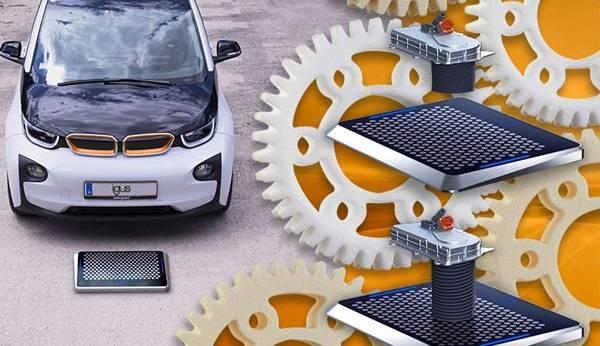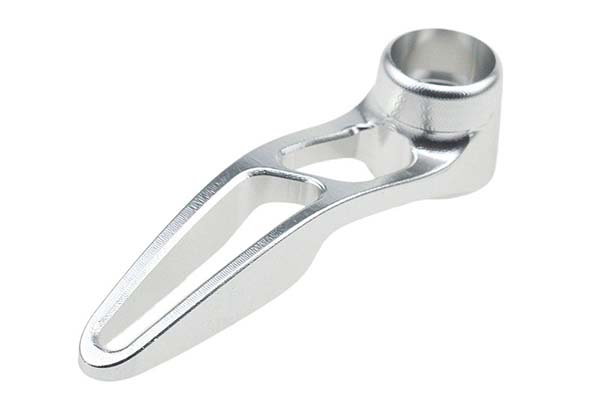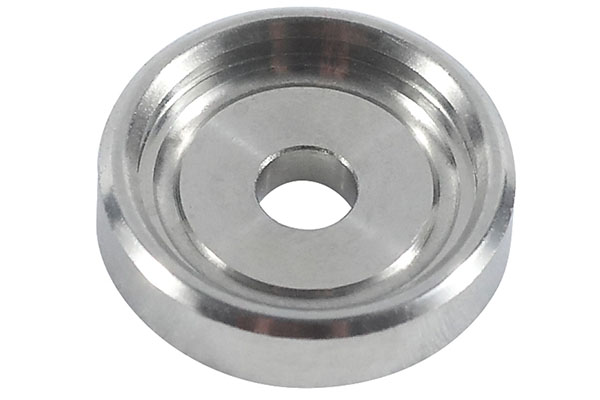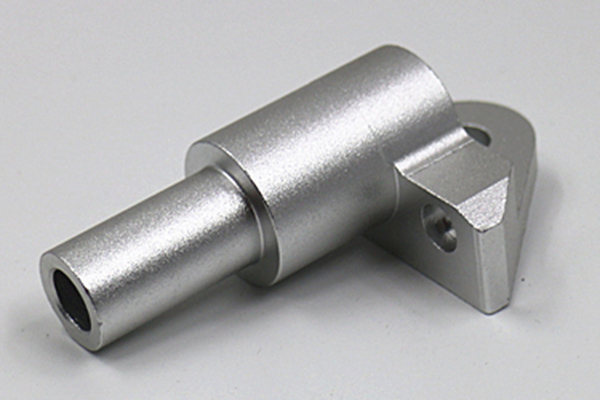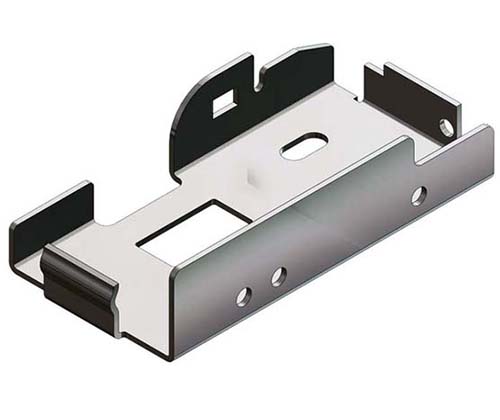Understanding Rapid Prototyping
What exactly is rapid prototyping? In simple terms, rapid prototyping, often abbreviated as RP, is a revolutionary manufacturing process that allows for the quick creation of a physical model or prototype of a product directly from a 3D digital design. It's a technology that has transformed the landscape of product development across numerous industries.
The significance of rapid prototyping in product development cannot be overstated. In today's highly competitive market, time is of the essence. For instance, a consumer electronics company might be developing a new smartphone. By using rapid prototyping, they can quickly produce a prototype to test its form factor, user interface, and basic functions. This helps in identifying design flaws and making improvements much earlier in the development cycle. According to a study by a leading manufacturing research firm, companies that incorporate rapid prototyping in their product development process can reduce their time - to - market by up to 30%. This gives them a significant edge over competitors who rely on traditional, more time - consuming prototyping methods.
Step 1: Design Creation
Concept Development
The journey of rapid prototyping commences with concept development. This is the stage where the initial spark of an idea begins to take shape. For example, if you're designing a new ergonomic office chair, it might start with observing the discomfort users experience in existing chairs. You could also draw inspiration from nature, like the natural curves of a seashell that provide both support and comfort. Brainstorming sessions with a diverse team, including designers, engineers, and potential end - users, can generate a wealth of ideas. Researching current market trends and competitor products is also crucial. A study showed that products with unique and innovative concepts are 40% more likely to succeed in the market. This uniqueness can be achieved by thinking outside the box, such as using unconventional materials or reimagining the traditional form - function relationship.
3D Modeling
Once the concept is solidified, the next step is 3D modeling. This is where the abstract concept is translated into a detailed digital model. Software like Autodesk Fusion 360, SolidWorks, and Blender are commonly used in this process. Autodesk Fusion 360, for instance, offers a comprehensive set of tools for parametric design, allowing designers to easily modify and optimize the model. SolidWorks is known for its robust mechanical design capabilities, making it a favorite among engineers.
In 3D modeling, every detail matters. Precise measurements, accurate surface finishes, and proper geometric tolerances must be defined. A minor error in the 3D model, such as an incorrect dimension of a crucial component in a mechanical device, can lead to significant problems in later stages. For example, if the hole diameter for a bolt in a prototype engine part is modeled too small, the actual prototype might not be able to assemble correctly, wasting time and resources. A survey of manufacturing companies found that 70% of prototype failures in the testing phase could be traced back to inaccuracies in the 3D design stage. So, investing time in creating an accurate 3D model is essential for a successful rapid prototyping process.
Step 2: Material Selection
Compatibility with the Process
After creating a detailed 3D model, the next crucial step in rapid prototyping is material selection. The compatibility between the chosen material and the rapid prototyping process is of utmost importance. For instance, in Fused Deposition Modeling (FDM), materials like ABS, PLA, and TPU are commonly used. ABS is known for its strength and heat resistance, making it suitable for applications where durability is key. PLA, on the other hand, is a more environmentally friendly option, derived from renewable resources, and is often chosen for its ease of use and good surface finish. TPU, with its high flexibility, is ideal for creating prototypes that require elastic properties.
Here is a simple table to illustrate the compatibility of common materials with different rapid prototyping technologies:
| Rapid Prototyping Technology | Compatible Materials |
| Fused Deposition Modeling (FDM) | ABS, PLA, TPU, PETG |
| Stereolithography (SLA) | Photopolymer resins |
| Selective Laser Sintering (SLS) | Nylon, Polyamide, Metal powders |
| Digital Light Processing (DLP) | Resins |
Using an incompatible material can lead to numerous issues. For example, if you try to use a material that is not suitable for the melting temperature range of an FDM printer, it may not extrude properly, resulting in a failed print. In SLA, using the wrong type of resin can cause problems with curing, leading to a soft or deformed prototype. A study of 100 rapid prototyping projects found that 20% of failures were directly related to material - process incompatibility. So, it's essential to ensure that the material you choose is well - suited to the selected rapid prototyping process.
Considering End - Use Requirements
The end - use requirements of the prototype also play a significant role in material selection. If the prototype is for a functional part in a mechanical device, materials with high strength and toughness are needed. For example, in the automotive industry, when prototyping engine components, materials like aluminum alloys or high - strength plastics such as PEEK (Polyether Ether Ketone) are often considered. PEEK has excellent mechanical properties, high temperature resistance, and chemical resistance, making it suitable for parts that need to withstand harsh operating conditions.
On the other hand, if the prototype is for a visual or aesthetic purpose, such as a product design model for a consumer electronics device, materials with good surface finish and color options are preferred. For instance, in the design of a smartphone prototype, a smooth - finishing resin in SLA or a high - quality PLA in FDM with the option for post - processing like painting can be used to achieve an attractive appearance.
In the medical field, biocompatibility is a crucial factor. When prototyping medical devices or implants, materials like titanium (for metal - based prototypes) or certain biocompatible polymers are used. Titanium is widely used in orthopedic implants due to its strength, corrosion resistance, and biocompatibility. According to medical device manufacturing standards, any material used in a medical prototype must pass strict biocompatibility tests to ensure it does not cause harm to the patient. So, understanding the end - use requirements thoroughly is vital for making the right material choice in rapid prototyping.
Step 3: Prototyping Process Execution
SLA (Stereolithography)
SLA, or Stereolithography, is one of the most precise rapid prototyping technologies. The principle behind SLA is quite fascinating. It uses a high - precision ultraviolet (UV) laser to selectively cure layers of a photosensitive liquid resin. In the beginning, a build platform is positioned just below the surface of the liquid resin in a tank. The UV laser then traces the cross - sectional shape of the first layer of the 3D model onto the resin surface. As the laser hits the resin, it solidifies, creating the first layer of the prototype. After that, the build platform lowers by a very small increment (usually in the range of 0.05 - 0.2 mm), and a new layer of liquid resin flows over the previously cured layer. The laser then cures the next layer, bonding it to the previous one. This process repeats until the entire 3D object is formed.
One of the most significant advantages of SLA is its high precision. It can achieve accuracies of up to ±0.1 mm, which is ideal for creating prototypes with fine details. For example, when prototyping jewelry pieces, the intricate designs and small details can be accurately replicated. The surface quality of SLA - printed parts is also excellent, with a smooth finish that closely mimics the look of a final product. This makes it suitable for applications where aesthetics matter, such as product design models for consumer goods. In the automotive industry, SLA can be used to create scale models of car interiors, where the smooth surface and precise details are crucial for evaluating the design.
FDM (Fused Deposition Modeling)
FDM, or Fused Deposition Modeling, is another popular rapid prototyping technology, especially for its cost - effectiveness and material versatility. The working principle of FDM is relatively straightforward. It uses a spool of thermoplastic filament as the raw material. The filament is fed into a heated extruder, where it is melted. The extruder then moves in a controlled manner, depositing the melted plastic layer by layer onto a build platform. As the plastic cools, it solidifies, bonding to the previous layer and gradually building up the 3D object.
One of the major advantages of FDM is its cost - effectiveness. The equipment and materials are generally more affordable compared to some other rapid prototyping technologies. For small - scale businesses or hobbyists, an FDM 3D printer can be a cost - efficient way to bring their ideas to life. Additionally, FDM offers a wide range of available materials. Some of the most common materials include ABS (acrylonitrile - butadiene - styrene), which is known for its strength and heat resistance, making it suitable for mechanical parts. PLA (polylactic acid) is another popular choice. It is biodegradable, derived from renewable resources like corn starch or sugarcane, and is easier to print with, making it great for beginners and for creating items where environmental friendliness is a factor. TPU (thermoplastic polyurethane) is a flexible material, ideal for prototypes that require elastic properties, such as shoe insoles or flexible phone cases.
For example, a DIY electronics enthusiast might use an FDM printer with ABS material to create a custom - designed enclosure for a new circuit board. The ability to choose from different materials allows for the creation of prototypes that can be tested for various functional requirements.
SLS (Selective Laser Sintering)
SLS, or Selective Laser Sintering, is a powerful rapid prototyping technology that works with powdered materials. The principle of SLS involves spreading a thin layer of powdered material (such as nylon, polyamide, or metal powders) evenly across a build platform. A high - power laser then scans the powder layer, selectively sintering (melting and fusing) the powder particles together according to the cross - sectional shape of the 3D model. Once one layer is complete, the build platform lowers, a new layer of powder is spread, and the process repeats until the entire object is formed.
One of the key advantages of SLS is its ability to create parts with high strength. This makes it suitable for functional prototypes that need to withstand mechanical stress. For example, in the aerospace industry, SLS can be used to create prototypes of engine components or structural parts. SLS also excels in manufacturing complex shapes without the need for additional support structures. Since the unsintered powder provides natural support during the printing process, it allows for the creation of intricate geometries that would be challenging to achieve with other methods. For instance, creating a prototype of a heat exchanger with complex internal channels can be easily accomplished using SLS.
In the medical field, SLS has been used to create patient - specific implants. By using biocompatible powders, doctors can design and produce implants that fit precisely to a patient's unique anatomy, improving the success rate of surgeries and patient recovery.
Step 4: Post - Processing
Support Removal
After the prototyping process is complete, the next step is post - processing, and one of the initial tasks in post - processing is support removal. Support structures are crucial during the rapid prototyping process. They are designed to provide stability and support to overhanging or complex geometries in the prototype. For example, in an SLA - printed part with a large, cantilevered section, support structures prevent the part from collapsing during the curing process.
Removing these support structures requires careful handling. The method of removal depends on the prototyping technology and the material used. In FDM, where the support structures are made of the same thermoplastic material as the part, they can often be removed by hand, especially if the support material is less rigid than the main part. However, for more intricate designs or when the support is firmly attached, tools like pliers or small cutters may be needed. In SLA or DLP printing, the support structures are cured resin, and they may be removed by gently snapping or cutting them away. It's essential to be very careful during this process to avoid damaging the main prototype. A single slip with a cutting tool can cause scratches or breakage in the prototype, which could affect its functionality or appearance.
Surface Finishing
Surface finishing is another vital aspect of post - processing. It can significantly enhance the appearance and feel of the prototype. There are several common surface - finishing methods. Sanding is a basic technique. By using sandpaper of different grits, starting from a coarse grit to remove large imperfections and gradually moving to a finer grit, the surface of the prototype can be smoothed. For example, in an FDM - printed plastic prototype, sanding can eliminate the visible layer lines, making the surface much smoother.
Polishing takes sanding a step further. After sanding, polishing compounds and polishing wheels can be used to achieve a high - gloss finish. This is often used for prototypes where aesthetics are crucial, such as consumer product prototypes. A polished surface not only looks more appealing but also feels smoother to the touch.
Painting is also a popular surface - finishing option. It can add color and further protect the prototype. For instance, in a prototype of a toy car, painting can give it a more realistic and attractive look. Different types of paints, such as acrylic or enamel, can be used depending on the material of the prototype and the desired finish.
Here is a simple comparison of the surface finish before and after post - processing:
| Stage | Surface Condition | Appearance | Feel |
| Before Post - Processing | Rough, with visible layer lines (in FDM) or small imperfections (in SLA) | Dull | Uneven |
| After Post - Processing (Sanding, Polishing, Painting) | Smooth | Glossy, with desired color | Smooth |
Surface finishing not only improves the visual appeal but also can affect the functionality of the prototype. A smooth - finished surface may reduce friction in a moving part prototype, for example, making it more efficient in its intended application.
Step 5: Testing and Evaluation
Functional Testing
Once the prototype has been created and post - processed, the next crucial step is testing and evaluation. Functional testing is a fundamental part of this stage. It focuses on ensuring that the prototype functions as intended according to the initial design requirements.
There are several methods for conducting functional testing. One common approach is to create a set of test cases based on the product's functional specifications. For example, if you have developed a prototype of a new handheld gaming device, the functional test cases might include testing the functionality of each button (such as the start, select, and directional buttons), the response time of the screen when different commands are input, and the proper operation of in - game features like pausing, saving, and loading.
Some key points to consider during functional testing are:
- Input and Output Validation: Ensure that the prototype correctly processes different types of input and provides the expected output. For a software - integrated prototype, this could mean testing various user inputs like text entries, button clicks, and file uploads, and verifying that the resulting outputs, such as error messages, data displays, or file downloads, are accurate.
- Edge Case Testing: Test the prototype at the boundaries of its functionality. For instance, if the gaming device has a battery - life claim of 8 hours, test it until the battery is completely drained to see how the device behaves at the end - of - life stage. Also, test the device's performance when the battery is almost full and when it is at a critically low level.
- Compatibility Testing: If the prototype is designed to interact with other systems or devices, test its compatibility. In the case of the gaming device, check if it can connect and communicate properly with different types of displays (HDMI - compatible monitors, for example), external controllers, and online gaming platforms.
Functional testing is vital as it helps in identifying design flaws and areas for improvement. According to a study by a leading product development research firm, 80% of product recalls or major design changes after product launch could have been avoided if more comprehensive functional testing had been done during the prototyping stage. By detecting and fixing issues early on, companies can save significant amounts of time and money that would otherwise be spent on re - engineering, production delays, or dealing with customer complaints.
Structural Analysis
Structural analysis is another important aspect of testing and evaluation. It focuses on assessing the integrity and strength of the prototype's structure. This is particularly crucial for prototypes that will be subjected to mechanical stress, such as parts in a machinery prototype or the frame of a vehicle prototype.
One common method for structural analysis is using computer - aided engineering (CAE) software. Programs like ANSYS and ABAQUS are widely used in this regard. These software tools allow engineers to perform simulations on the 3D model of the prototype. They can apply various loads and boundary conditions to the model to predict how the physical prototype will behave under real - world conditions. For example, in the design of a new bicycle frame prototype, CAE software can simulate the forces exerted on the frame when a rider is pedaling, braking, or going over bumps. It can then calculate stress distributions, displacements, and potential areas of failure within the frame structure.
In addition to software simulations, physical testing using specialized equipment can also be carried out. Universal testing machines can be used to apply tensile, compressive, and bending forces to the prototype to measure its strength and deformation characteristics. For a prototype of a metal bracket used in a construction application, a universal testing machine can gradually increase the load on the bracket until it fails, providing data on its ultimate strength.
Let's take the example of a prototype of a drone frame. Through structural analysis using CAE software, engineers discovered that a particular section of the frame was experiencing high stress concentrations during flight maneuvers. By modifying the design of that section, such as adding additional reinforcement or changing the geometry, they were able to reduce the stress levels and improve the overall structural integrity of the drone frame. This not only enhanced the performance and safety of the drone but also saved the company from potential failures and costly redesigns in the later production stages. Structural analysis is thus an essential step in ensuring that the prototype can withstand the demands of its intended application.
Yigu Technology's Perspective
As a non - standard plastic metal products custom supplier, Yigu Technology has a wealth of experience in rapid prototyping. We understand that material selection is the cornerstone of a successful prototype. For plastic products, we carefully evaluate factors like chemical resistance, flexibility, and heat resistance. When it comes to metal materials, we focus on aspects such as strength - to - weight ratio and corrosion resistance.
In terms of process control, our team of experts strictly monitors every stage of the rapid prototyping process. Whether it's FDM, SLA, or other technologies, we ensure that the equipment is calibrated accurately, and the printing parameters are optimized. This meticulous approach allows us to produce high - quality prototypes that meet and often exceed our clients' expectations. Our goal is to support our clients throughout the product development journey, from the initial concept to the final prototype, with our expertise and state - of - the - art manufacturing capabilities.
